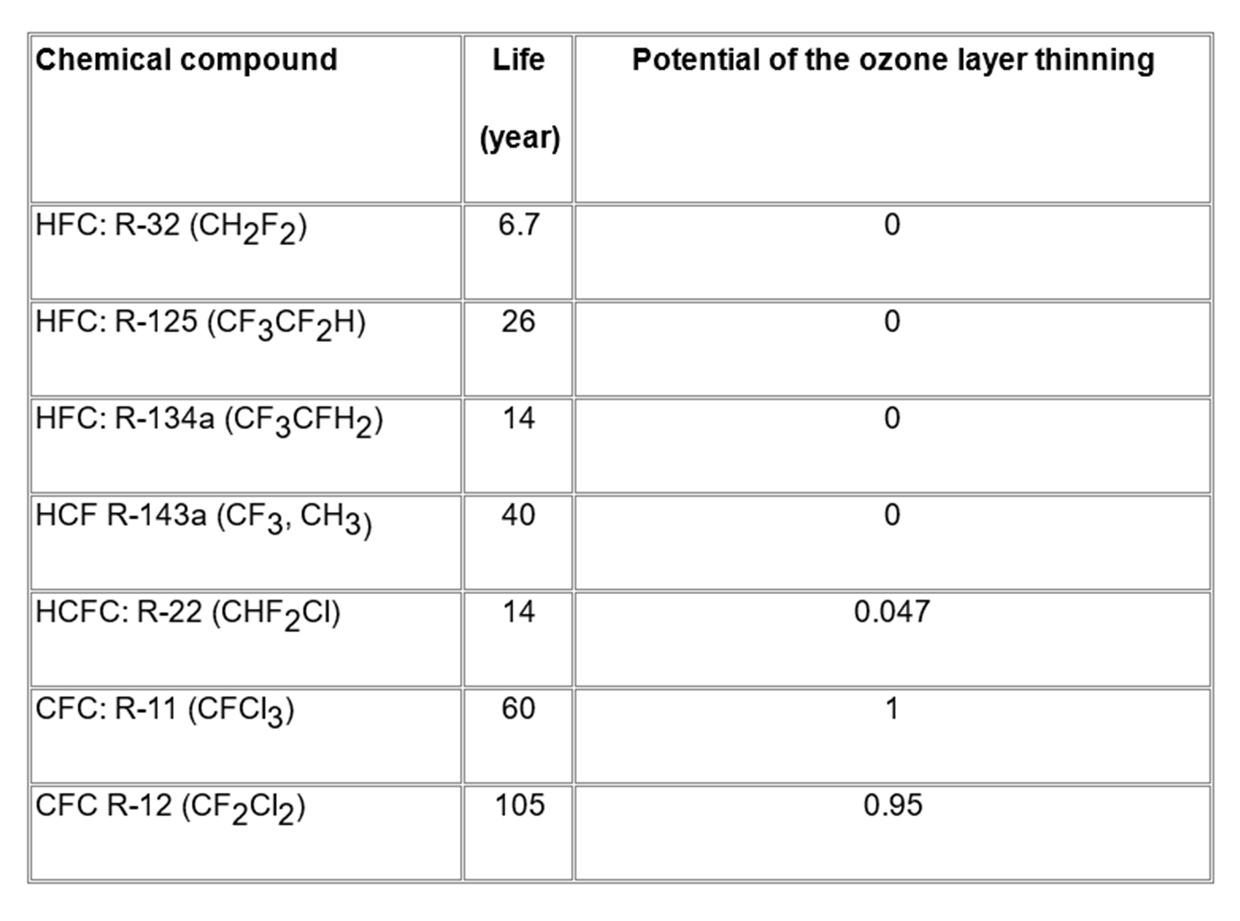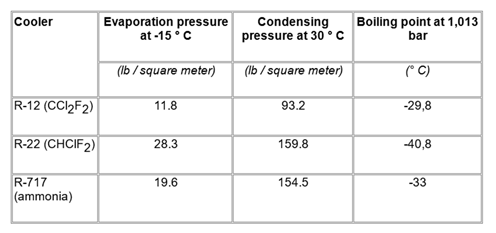As a cooling medium, CSW is becoming more common on small fishing boats. For example, small boats, with a total length of 9.75 m, use this system to maintain high-value hunting in the best condition after catching. Total temperature control in CSW tanks is provided by adding ice to the low seawater temperature and the latch temperature added during the journey. To prevent temperature stratification in CSW tanks, two basic systems are used, one of which is also known as the "champagne" system, and the other is CSW recirculation with the pump. These are shown in Figure 2.7.
Chilled seawater
RSW systems have a built-in cooling facility to cool seawater instead of using melting ice. In addition, RSW needs pumps, pipes, and filters to circulate in tanks or holds. In normal practice, this system requires a special power plant, such as a diesel or diesel power generator, that provides direct power or electricity to operate the electric motors for cooling compressors and circulation pumps, depending on the type of drive motors used.
Two basic systems are used for RSW cooling of products: one involves simply dipping the sleeve in the filled RSW tanks; The second system does not use tanks but sprays chilled water onto the rack collection.
While filling the RSW tanks in the enclosure with chilled clean water later, some boats will load ice into the tanks before filling them with water. This saves time and reduces some of the load on the cooling system by pre-cooling the water. Figure 2.8 shows a typical RSW spray system installed on ships on the Pacific northeastern coast. RSW tanks are similar to CSW tanks, the main difference is in the installation of a cooling unit with a much better filter system for power supply and recirculating water.
Recent advances in hydraulic systems have made it possible to operate a cooling compressor using hydraulic power from a PTO (PTO) from the boat's main engine. This was developed using load-sensitive pumps that, when adjusted, maintain a constant flow regardless of engine speed. This ensures that a cooling compressor operates at a constant speed regardless of whether the engine is idling or at full speed. These pumps switch to standby mode when there is no hydraulic flow demand, and only small amounts of power are consumed in this mode. However, if the main engine is idling when the compressor is engaged, there is a significant amount of power demand. Therefore, engineers recommend that the main engine have very good power reserves at low or idle speeds.
Montreal Protocol provisions on chemicals that deplete the ozone layer

Note: All Protocol provisions came into force on 1 January 1989 and were revised in 1990.
Atmospheric types of some halogenated hydrocarbons and thinning potential of the ozone layer

Refrigerants and environmental effects
Chemicals used as refrigerants known as chlorofluorocarbons (CFCs) are known to have negative effects on the stratospheric ozone layer of the world. As a result, international efforts are being made to remove most CFCs or halogenated hydrocarbons from commercial use (see Table 2.7). A number of environmentally acceptable alternatives such as R-22, ammonia (R-717), HP-62, and hydrofluorocarbons (HFCs) and hydrochlorofluorocarbons (HCFCs) are proposed, see Table 2.8. Examples of new HFCs and HCFCs are as follows:
HCF R-134a (CF3CFH2): Replaces the CFC R-12 used in small coolers. Home cooling and car air conditioning units.
HCFC R-22 (CHF2CL): replaces CFC R-12 in industrial refrigeration units.
Brief technical data of some refrigerants used in fisheries

The main technical characteristics of HFC and HCFCs are:
Both coolants are volatile and do not dissolve in water.
After being released into the environment, these refrigerants remain in the atmosphere where they are oxidized to various degradable products that are not considered toxic or harmful.
Commercially available HCFs and HCFCs are classified as “ozone-friendly” coolers.
HCFCs are much less harmful to the ozone layer than CFCs, but HCFCs transport chlorine to the ozone layer after release. For this reason, countries like the United States have developed a program for a complete ban on the production and import of HCFCs by 2030.
Regarding the most used refrigerants in fisheries, R-12, R-22, R-502, and ammonia (R-717) are the leading products, see. Table 2.9. However, with the ban on CFCs by 2000 in developed countries, most of the existing cooling plants using CFC will face serious problems in conversion from R-12 and R-502 to other refrigerants. In engineering terms, it is possible in some cases to convert cooling plants to use alternative refrigerants. For example, a brief analysis to convert R-12 cooling plants to R-22 plants may show:
There are significant differences between R-12 and R-22, such as boiling point temperatures at normal atmospheric pressure (-29.8 ° C for R-12 and -40.8 ° C for R-22) and higher gas discharge pressures for R-22.
Due to the higher discharge temperatures of the R-22, different grade capacitors will need to be installed in the converted cooling plant. In addition, as a general rule, a cooler with a lower boiling point requires a smaller compressor than a cooler with a higher boiling point for the same capacity. In addition, in general, lower boiling refrigerants require higher operating pressures.
As a result of the high gas pressures of the R-22, the converted cooling plant will require other suitable piping to withstand higher working pressures.
Before strengthening existing refrigeration facilities, accurate costing should be made, given that in some cases conversion can be very expensive. Therefore, before making any decisions, a detailed analysis of costs and benefits should be prepared, including a realistic assessment of the remaining life and economic value of the refrigeration plant.
Security observations
Currently, R-717 (ammonia) is the main alternative coolant for commercially used CFCs for large-sized ice plants, and this chemical has no detrimental effect on the ozone layer. Although R-717 is considered toxic and corrosive, its pungent odor and irritant properties also act as a warning when leaks develop. It is considered to be fatal or can produce serious injuries to humans at concentrations of 0.5 to 1 percent at exposures of several to 30 minutes. This is especially true of boats where R-717 clouds are produced with large gas leaks in confined spaces, where in some cases personnel may be trapped before evacuating the cooling compartment and may cause serious injury or death. In addition, R-717 can be exposed to explosion and fire when combined with certain amounts of air or oxygen. The smallest percentage of gas/vapor that would make a flammable air vapor mixture for the R-717 is 15.5 percent by volume in the air. If there is less gas in the mixture, it is too weak to burn. However, in some areas on the ship, such as chilled process or storage areas, which can be considered unusually narrow spaces, large releases of the R-717 can cause an explosion. Therefore, there are health hazards associated with the use of R-717, and skilled labor is required for the operation and maintenance of R-717 cooling facilities. Releasing R-717 in large quantities may cause an explosion. Therefore, there are health hazards associated with the use of R-717, and skilled labor is required for the operation and maintenance of R-717 cooling facilities. Releasing R-717 in large quantities may cause an explosion. Therefore, there are health hazards associated with the use of R-717, and skilled labor is required for the operation and maintenance of R-717 cooling facilities.
On large fishing boats, R-717 cooling machines should be placed in a separate cooling section (vapor-proof type chamber equipped with leak/fire alarm systems). The cooling section should have two outlets, one with direct access to the open deck. The department should be equipped with emergency ventilation at a capacity of 30 times the air volume per hour and equipped with remote-controlled emergency water sprinklers. The exits from the cooling section should be equipped with emergency water curtains to prevent further leakage of ammonia outside the room. The main function of sprinkler systems is to limit the spread of gas, protect personnel in these areas, and protect escape routes. In addition, water sprinklers can extinguish fires in the cooling chamber and control the amount of heat generated. Appropriate compressed air breathing apparatus should be available at both exits from the cooling section and placed in an easily accessible place.
